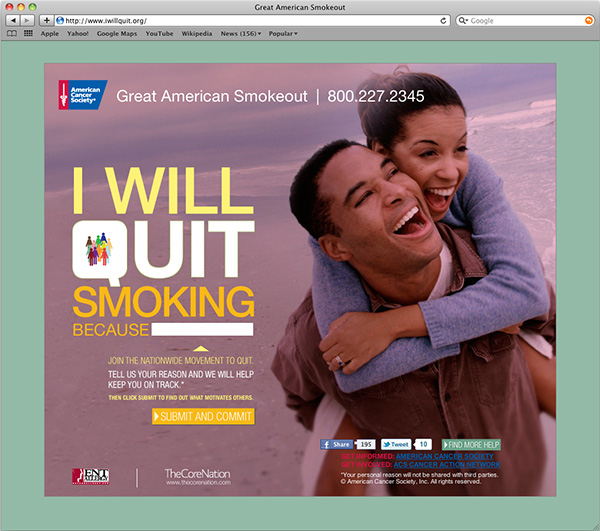Pharma marketers have traditionally believed that you must end a sales call, promotional piece, or DTC ad with a strong call to action. But as I’ve already pointed out, telling people what to do may actually have the opposite effect.
You may experience push back — or complete dismissal — from a physician who has been using the same drug successfully for many years if he or she sees no reason to change. This can also occur when physicians have low interest in a condition (for example, market research has shown us that urologists are not always receptive to hearing about overactive bladder medications).
You also run the risk of alienating patients if they are in denial about having a life-threatening disease like cancer, or a problem with symptoms they cannot see, such as hypercholesterolemia or hypertension.
Take the path of least resistance
Instead of telling people what to do, or challenging their beliefs, think about showing them the reasons why taking a drug or making a behavior change will benefit them. The best approach is to engage them in a way that helps them come to their own behavior-changing conclusions.
For decades, physicians, health organizations, and family members have been trying to convince smokers that they need to quit. But 48 million Americans still light up. So when the American Cancer Society (ACS) asked us to create a motivating campaign for their annual Great American Smokeout initiative, we knew that lecturing or scare tactics would not work.
With our “I Will Quit Because ______” campaign, we asked smokers to fill in the blank with their own reason to kick the habit — quite literally, on the microsite iwillquit.org. By filling in the blank and opting in, aspiring quitters received personalized e-mails reminding them of their reason and offering them tips to help them succeed.
We understood that when you talked with 100 ex-smokers, you’d hear 100 different reasons for why they quit. It’s always highly personal. Using this to our advantage, we successfully convinced people to commit to quit without ever telling them to stop smoking.
The key to engaging any target audience is knowing how they think — both emotionally and rationally — and convincing them without feeling like they have been convinced. The key is to avoid triggering their automatic defense mechanisms or resistance patterns. Framing your messaging so that they can identify with your brand — and feel that they are part of your brand story — can certainly help.
This isn’t always easy. But it works.
RELATED TOPICS

Ken is a great deal more than just the president of a medical communications company. He is something of a hybrid. He’s part marketing manager, part creative director, and part copywriter. To the chagrin of his peers—but to the delight of his clients—Ken is a consummate perfectionist. As a former creative director for a high-end consumer agency, he challenged his creative teams to go beyond the mundane to produce work with real creative impact, something he’s just as fervent about today. From producing and directing TV commercials, to launching DTC and Rx-to-OTC switches, Ken brings his clients a world of experience in OTC pharmaceuticals as well as business, lifestyle, and high-end consumer products and services. Whether huddled with clients behind a mirror in a market research center in Houston, facilitating a strategic workshop in Madrid, or developing a global campaign either in the New Jersey or California office, Ken is always fully engaged, bringing “bestness” to all areas of his hectic but full life.

